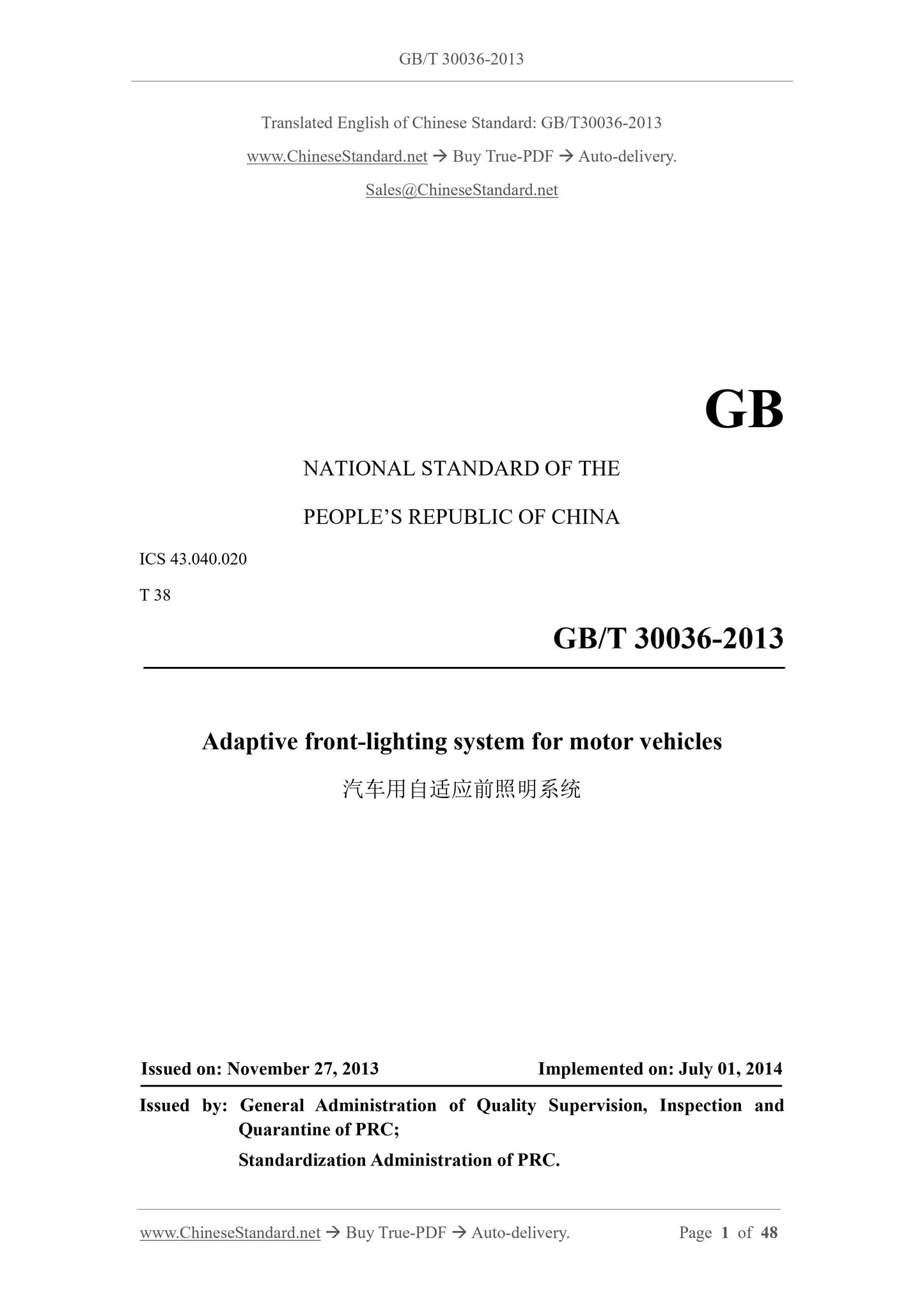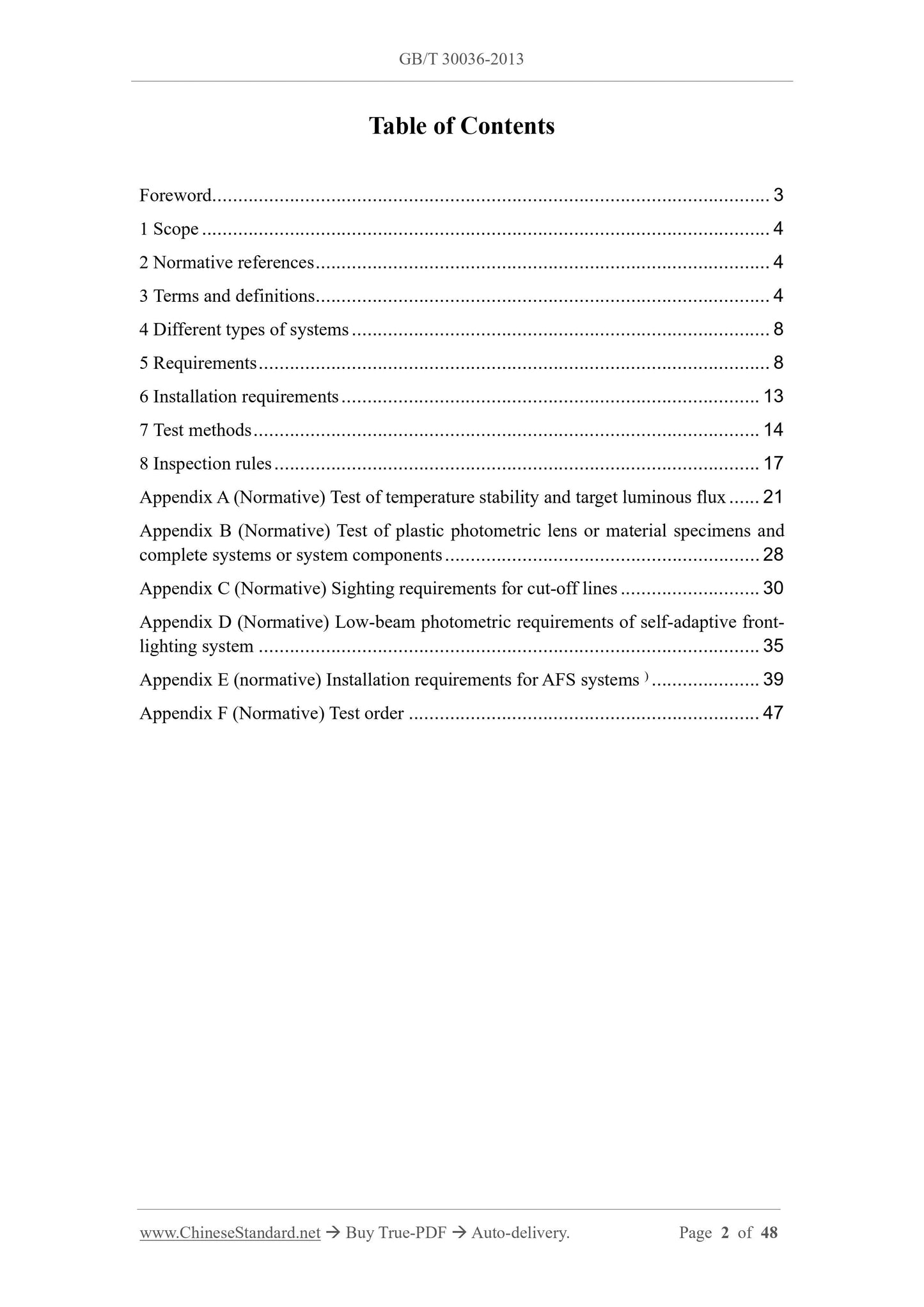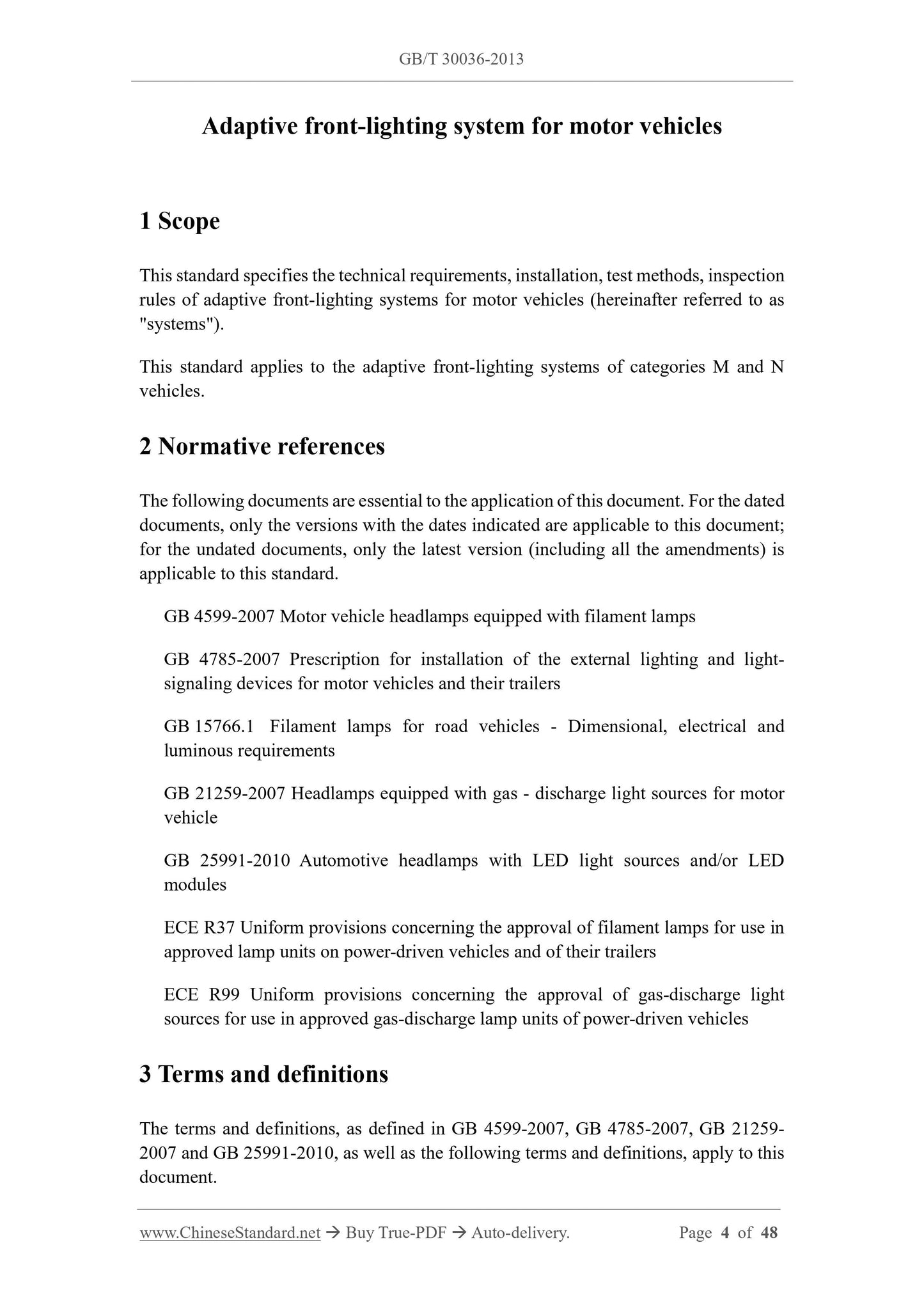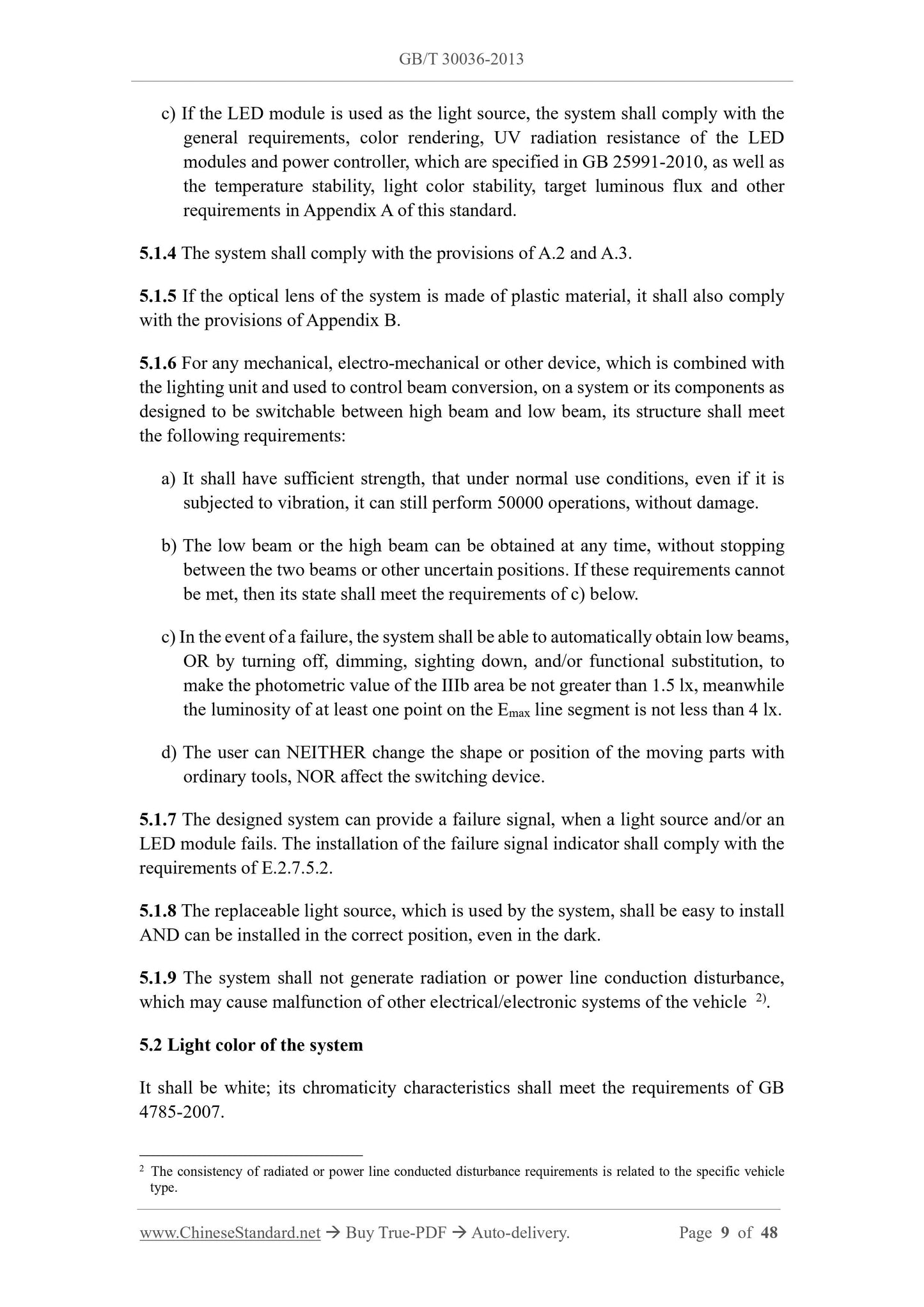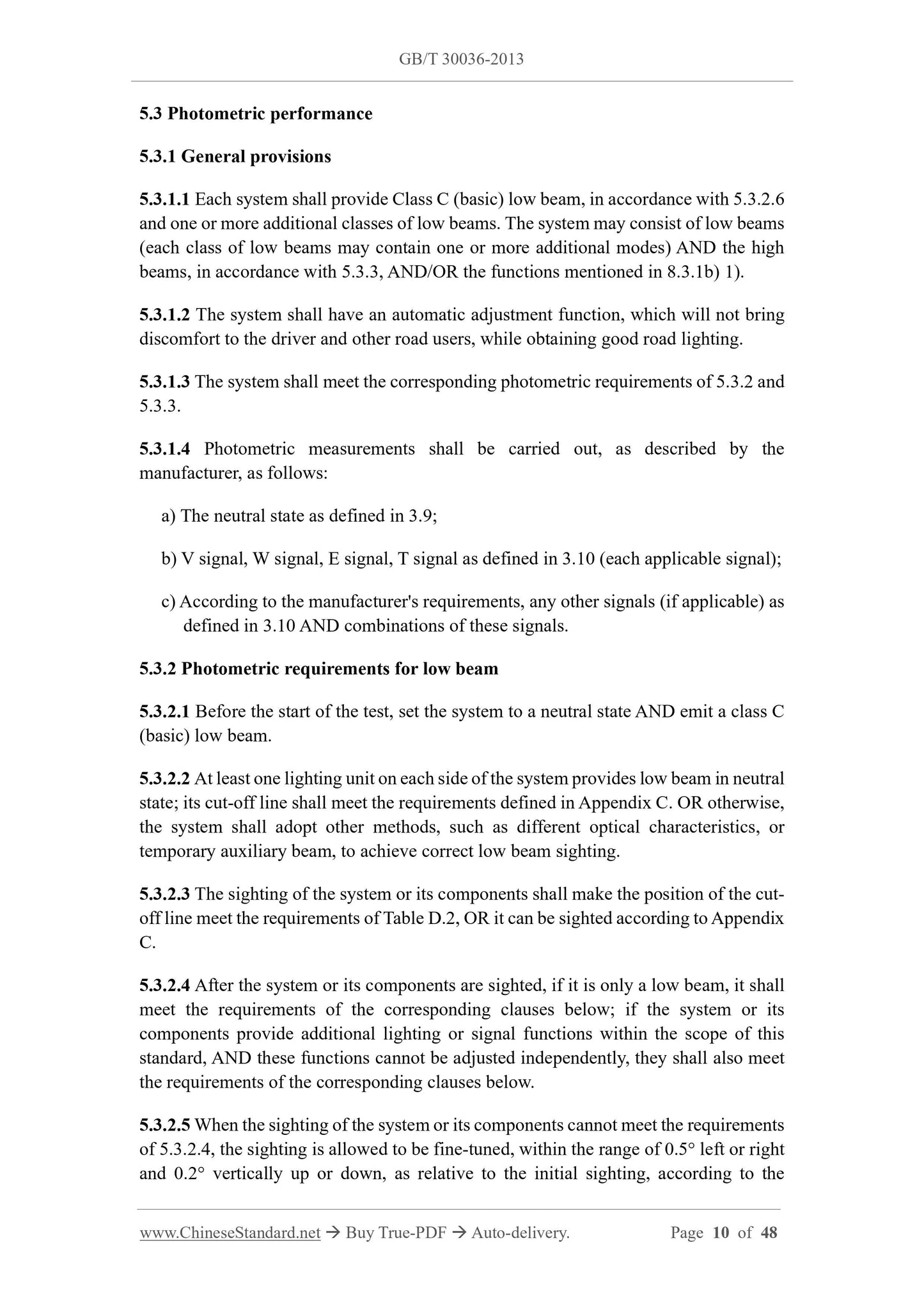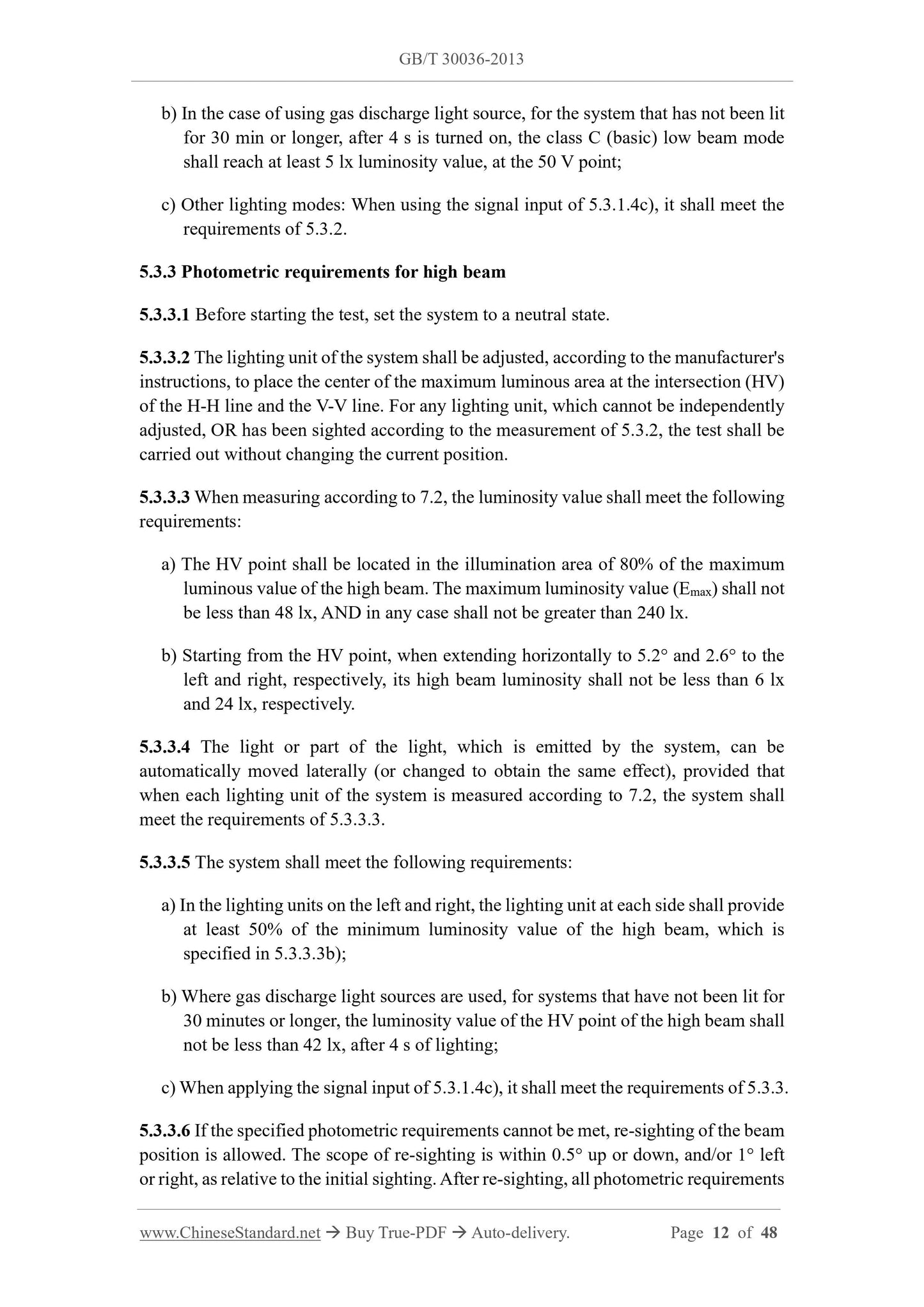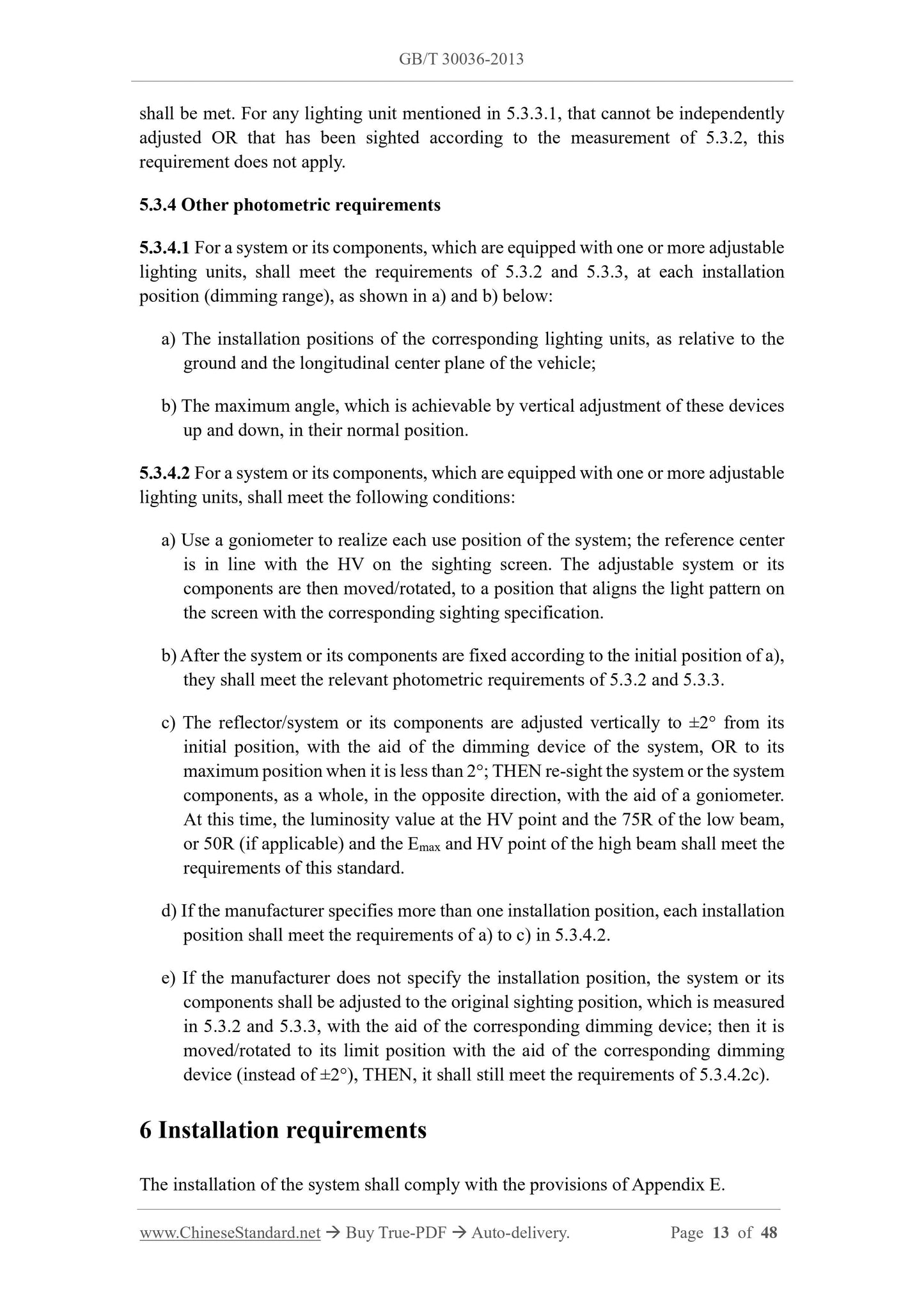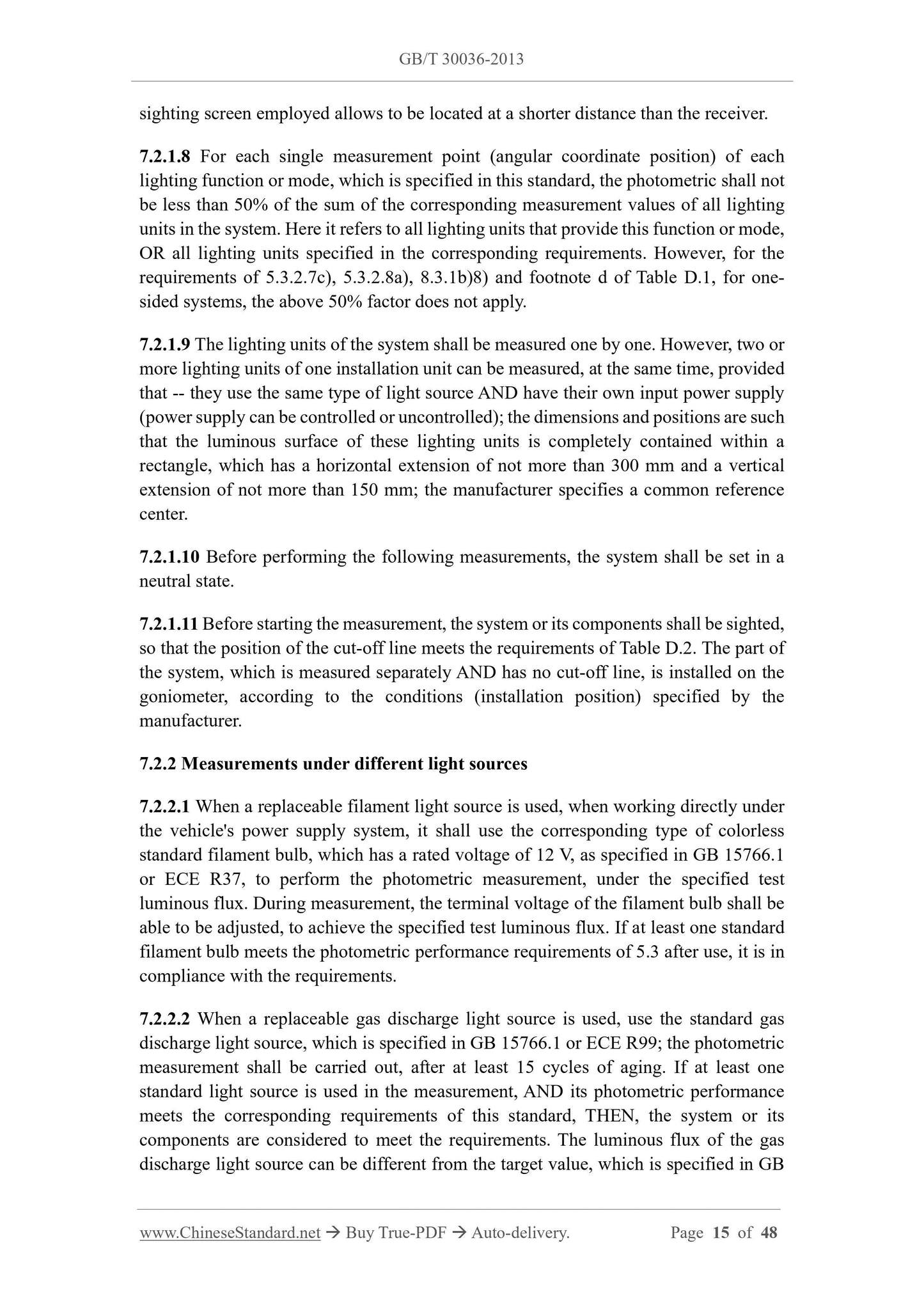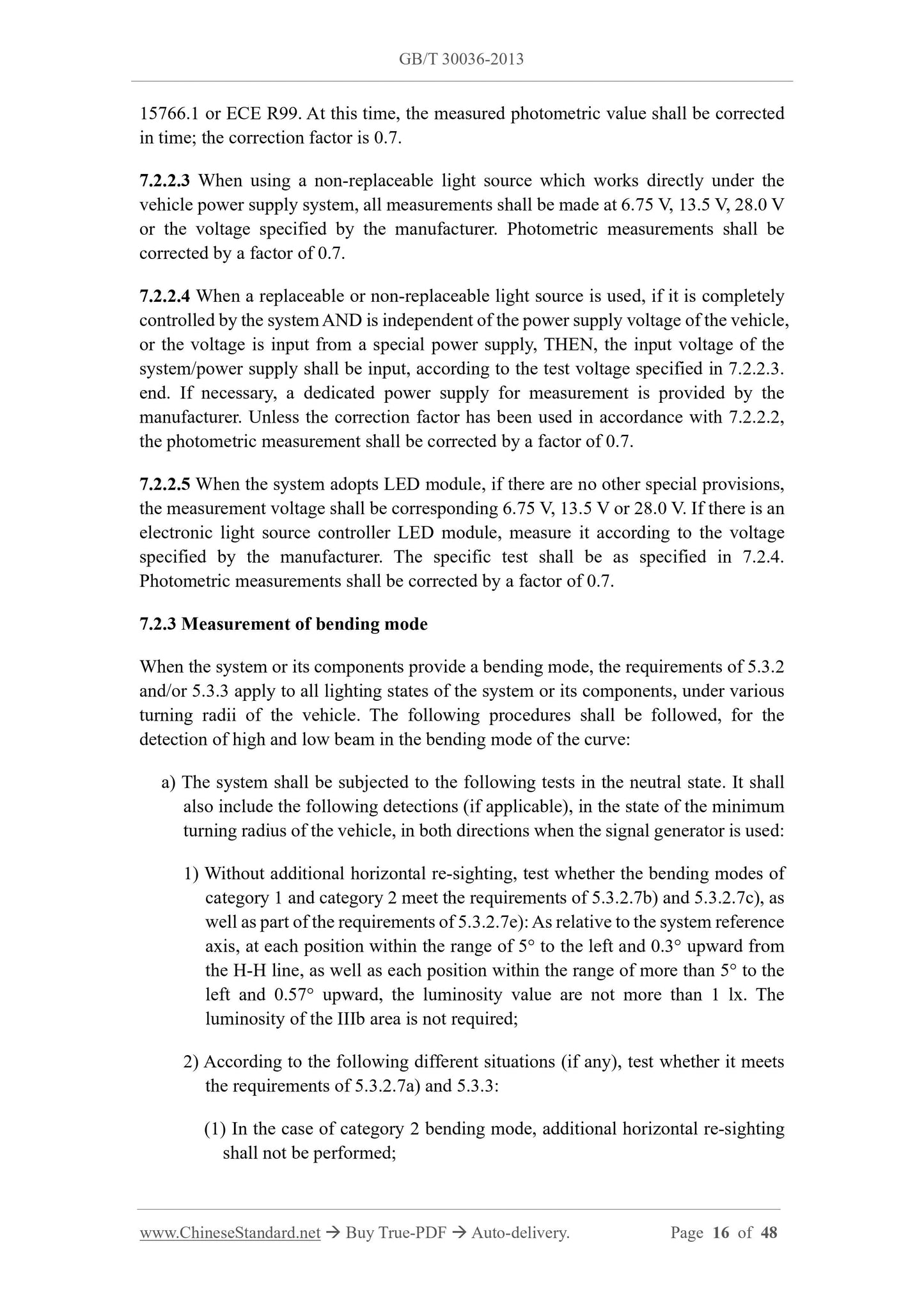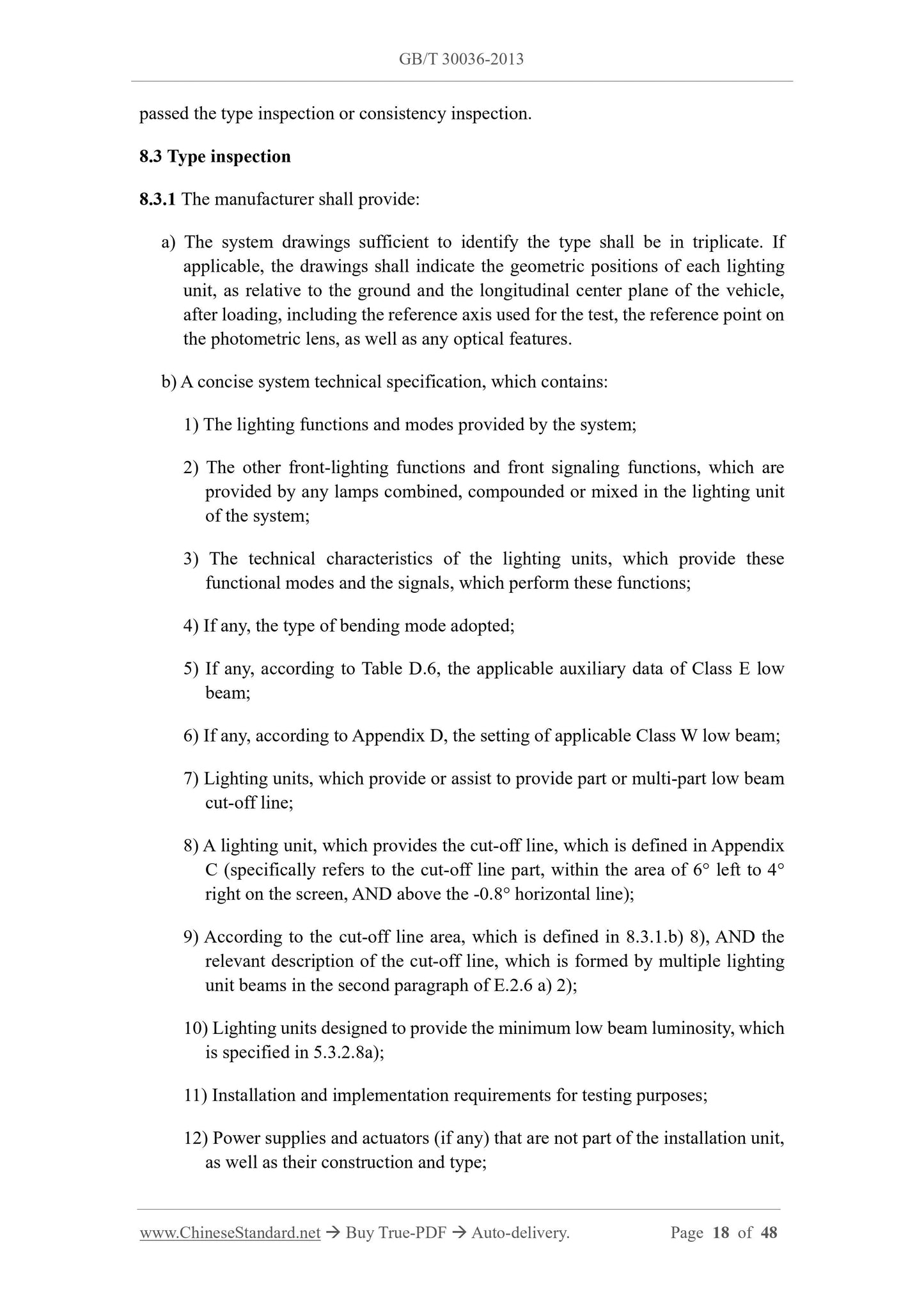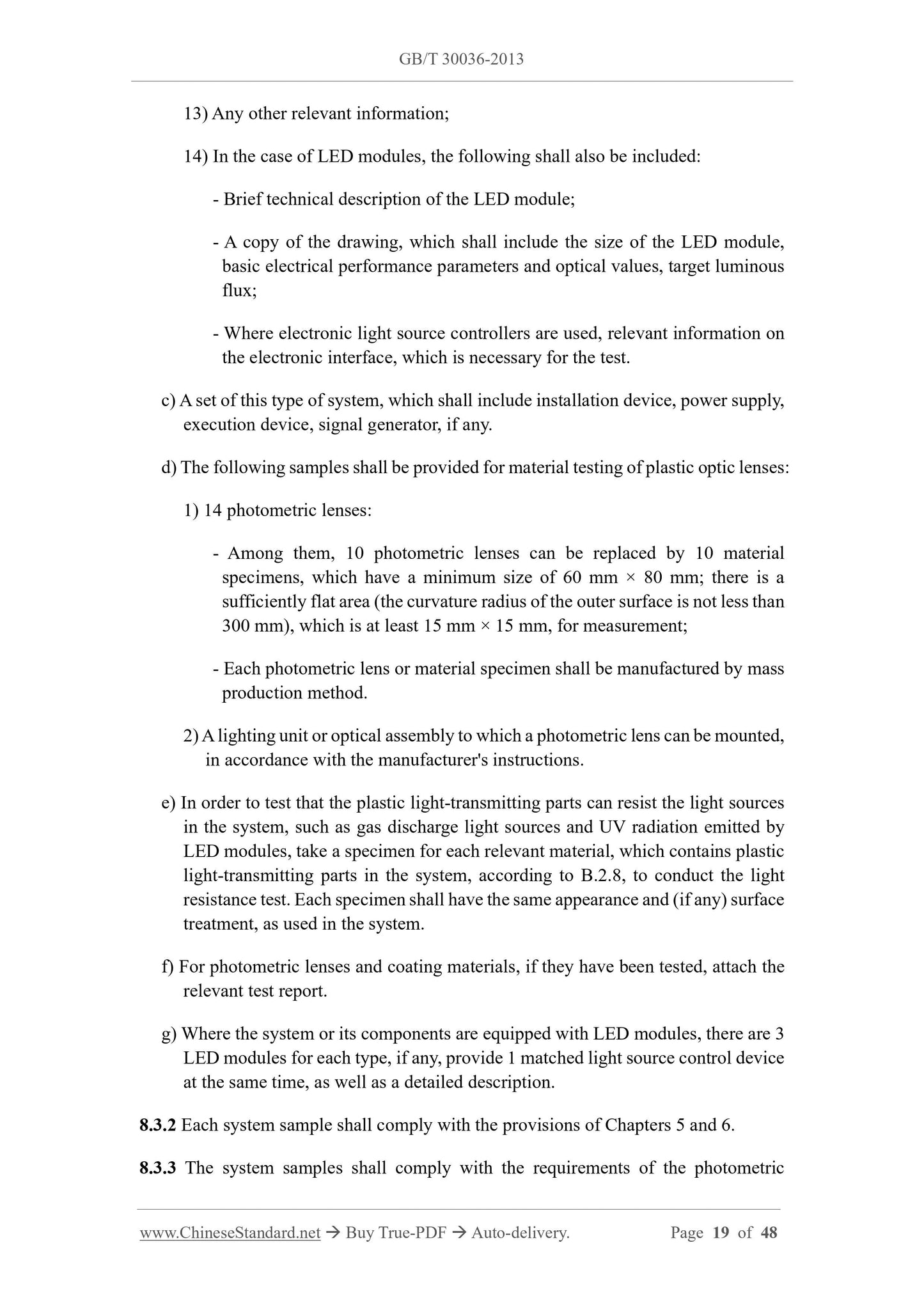1
/
of
11
www.ChineseStandard.us -- Field Test Asia Pte. Ltd.
GB/T 30036-2013 English PDF (GB/T30036-2013)
GB/T 30036-2013 English PDF (GB/T30036-2013)
Regular price
$485.00
Regular price
Sale price
$485.00
Unit price
/
per
Shipping calculated at checkout.
Couldn't load pickup availability
GB/T 30036-2013: Adaptive front-lighting system for motor vehicles
Delivery: 9 seconds. Download (and Email) true-PDF + Invoice.Get Quotation: Click GB/T 30036-2013 (Self-service in 1-minute)
Newer / historical versions: GB/T 30036-2013
Preview True-PDF
Scope
This standard specifies the technical requirements, installation, test methods, inspectionrules of adaptive front-lighting systems for motor vehicles (hereinafter referred to as
"systems").
This standard applies to the adaptive front-lighting systems of categories M and N
vehicles.
Basic Data
| Standard ID | GB/T 30036-2013 (GB/T30036-2013) |
| Description (Translated English) | Adaptive front-lighting system for motor vehicles |
| Sector / Industry | National Standard (Recommended) |
| Classification of Chinese Standard | T38 |
| Classification of International Standard | 43.040.020 |
| Word Count Estimation | 32,397 |
| Quoted Standard | GB 4599-2007; GB 4785-2007; GB 15766.1; GB 21259-2007; GB 25991-2010; ECE R37; ECE R99 |
| Regulation (derived from) | National Standards Bulletin 2013 No. 23 |
| Issuing agency(ies) | General Administration of Quality Supervision, Inspection and Quarantine of the People's Republic of China, Standardization Administration of the People's Republic of China |
| Summary | This standard specifies the: automotive adaptive front lighting system (hereinafter referred to as the "System") the technical requirements, installation, test methods and inspection rules. This standard applies: M, N class car Adaptive Front Lighting Sys |
Share
